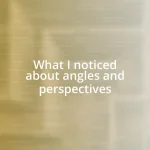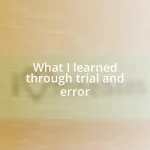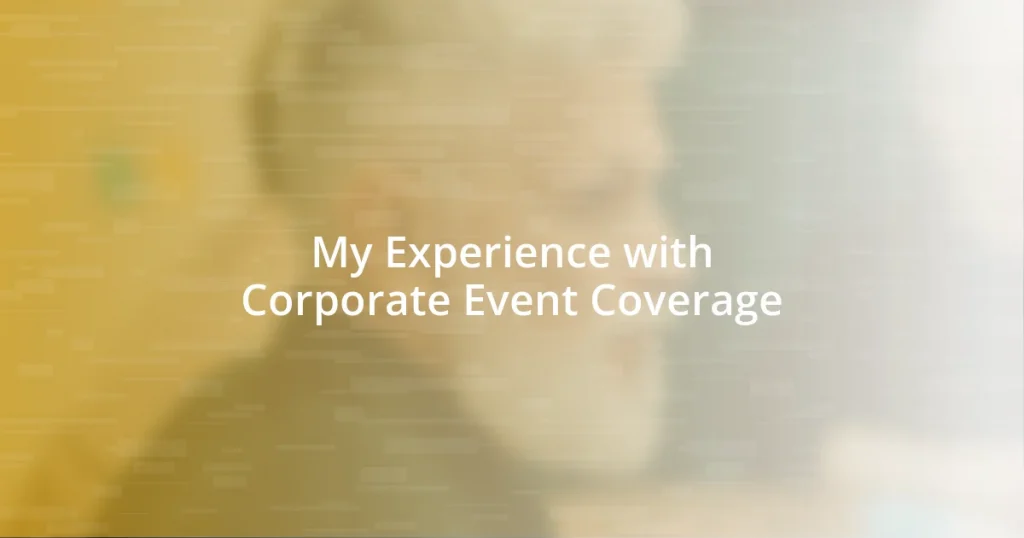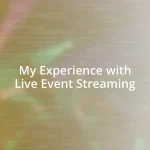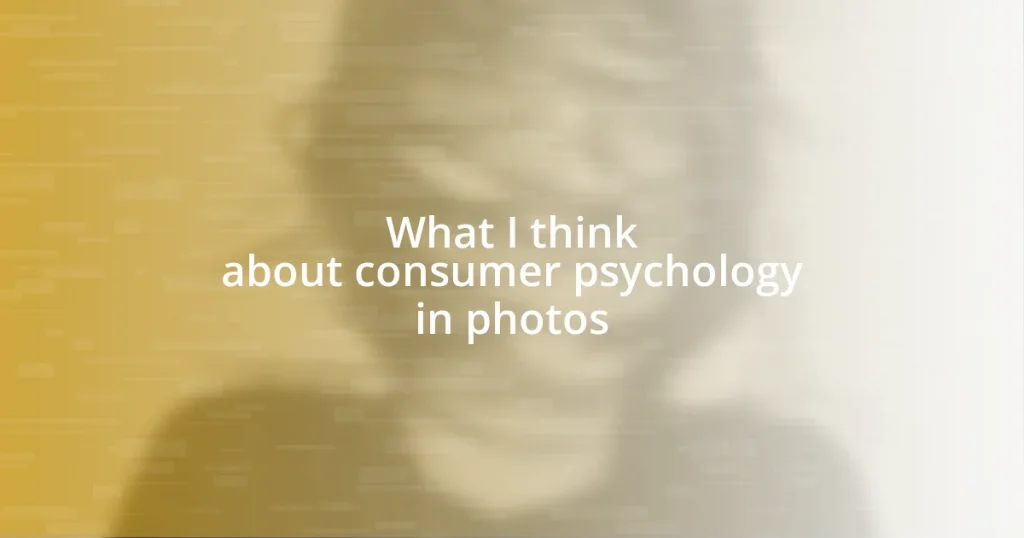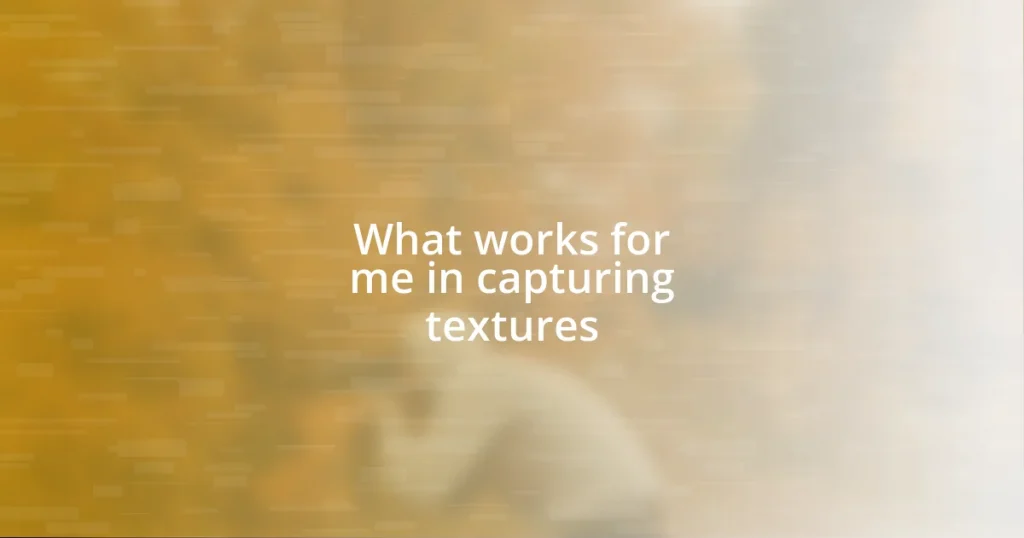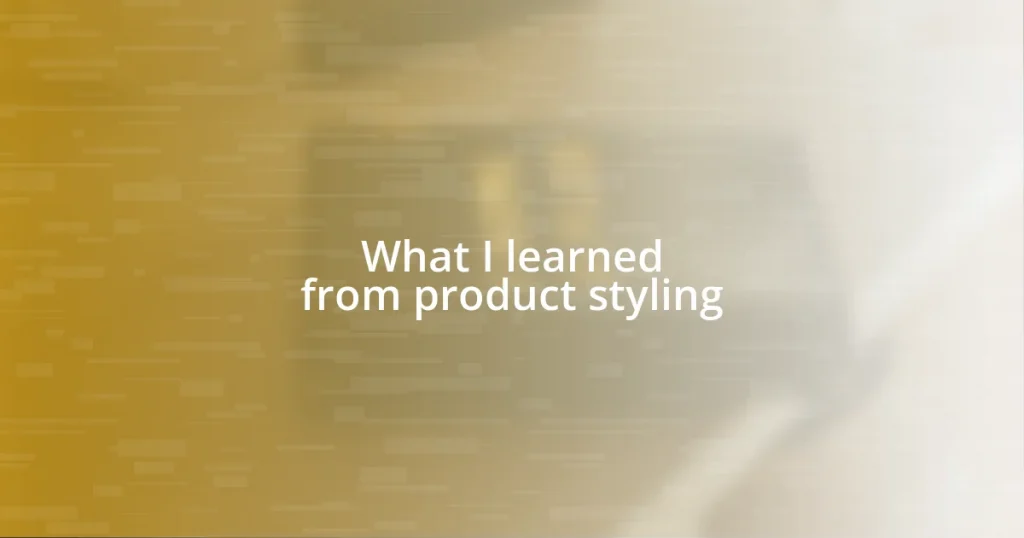Key takeaways:
- Effective corporate event coverage captures the energy and essence of the event, fostering audience engagement and enhancing brand recall.
- Meticulous planning aligns corporate events with goals, ensuring smooth execution and enhancing the attendee experience for meaningful connections.
- Utilizing the right tools and social media strategies elevates event coverage, enabling real-time engagement and continued storytelling post-event.
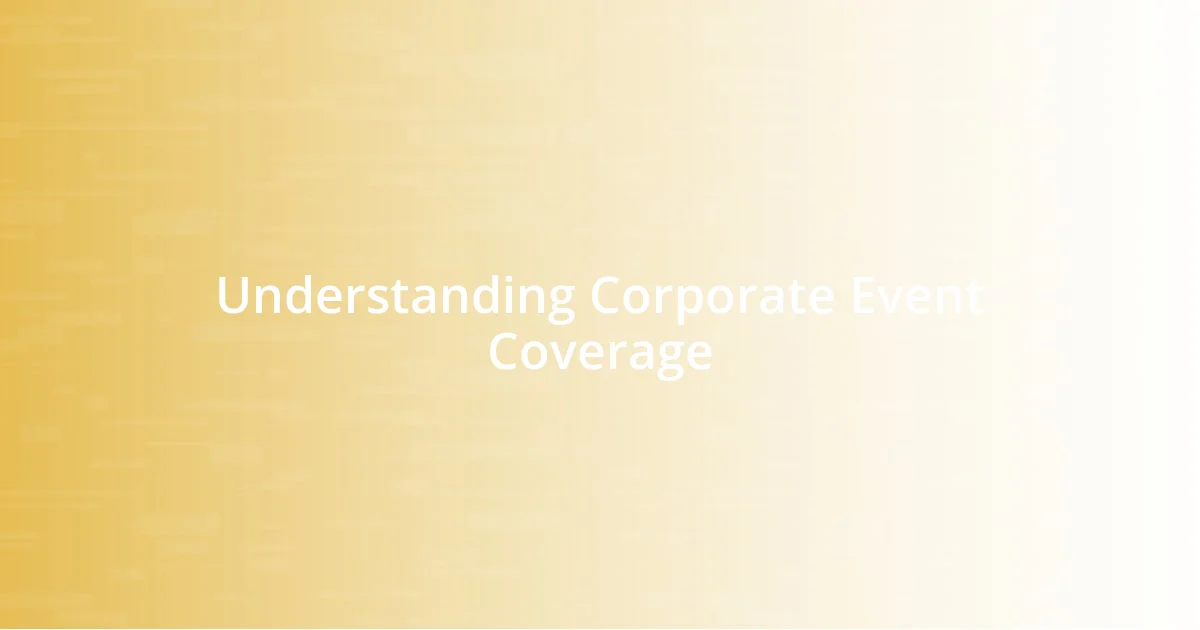
Understanding Corporate Event Coverage
Understanding corporate event coverage is crucial for creating a lasting impression and effectively communicating a brand’s message. From my experience, I’ve seen how well-planned coverage not only captures the event but also tells a story that resonates with the audience. Have you ever attended a corporate event and felt the energy? That’s what effective coverage aims to encapsulate—it’s about more than just documentation; it’s about capturing the essence of the moment.
I remember covering a product launch where the energy in the room was electrifying. The atmosphere was filled with excitement, and it was my job to ensure that came through in the photos and videos. Every smile, every handshake—it all mattered. The challenge was how to encapsulate that excitement in the footage to convey to those who weren’t there. This makes you wonder, what is the true impact of a well-executed corporate event coverage? It’s about building connections, fostering engagement, and enhancing brand recall.
Moreover, corporate events often bring together key stakeholders, making it imperative to handle coverage with precision and professionalism. I’ve learned that understanding the audience is just as important as understanding the event itself. Wouldn’t you agree that knowing who you’re speaking to shapes how you portray the event? By prioritizing audience needs, we can create a compelling narrative that not only reflects the event accurately but also enhances the corporate image.
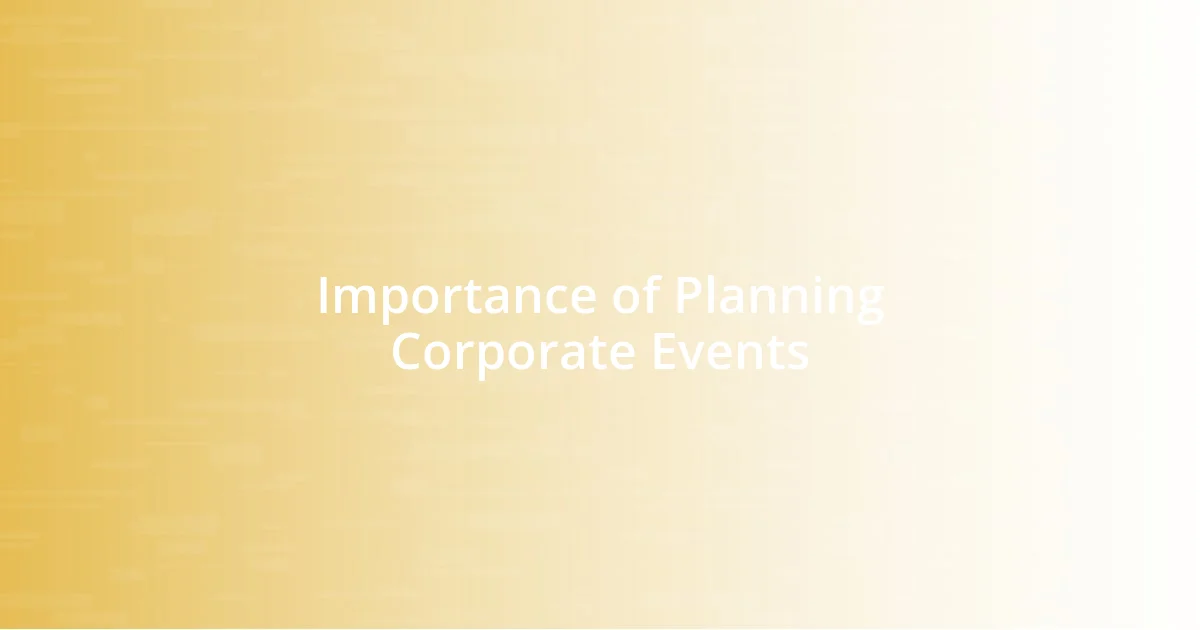
Importance of Planning Corporate Events
Planning corporate events is more than just logistics; it sets the foundation for success. I remember a time when a lack of planning led to a chaotic experience at a networking event I attended. The venue was miscommunicated, which caused confusion among guests and detracted from the overall purpose. This experience taught me that meticulous planning not only outlines the agenda but also ensures a seamless flow, allowing attendees to connect meaningfully.
Another key importance of planning is aligning the event with corporate goals. I once worked on an event aimed at launching a new service. The planning team set clear objectives that included boosting brand awareness and generating leads. As a result, we designed interactive sessions that kept guests engaged and encouraged conversations that translated into valuable business connections. Measuring success becomes much easier when the objectives are set from the start.
Effective planning also enhances the attendee experience. I recall a conference that incorporated a feedback mechanism for sessions, which allowed for immediate improvements and greater attendee satisfaction. When people feel valued, they are more likely to share their positive experiences, reinforcing the brand’s reputation in the process. Isn’t it interesting how much impact thoughtful planning can have on future business opportunities?
| Aspect | Importance of Planning |
|---|---|
| Logistics | Ensures smooth execution and prevents confusion. |
| Alignment with Goals | Helps achieve corporate objectives and measurable outcomes. |
| Attendee Experience | Enhances satisfaction and promotes positive brand perception. |
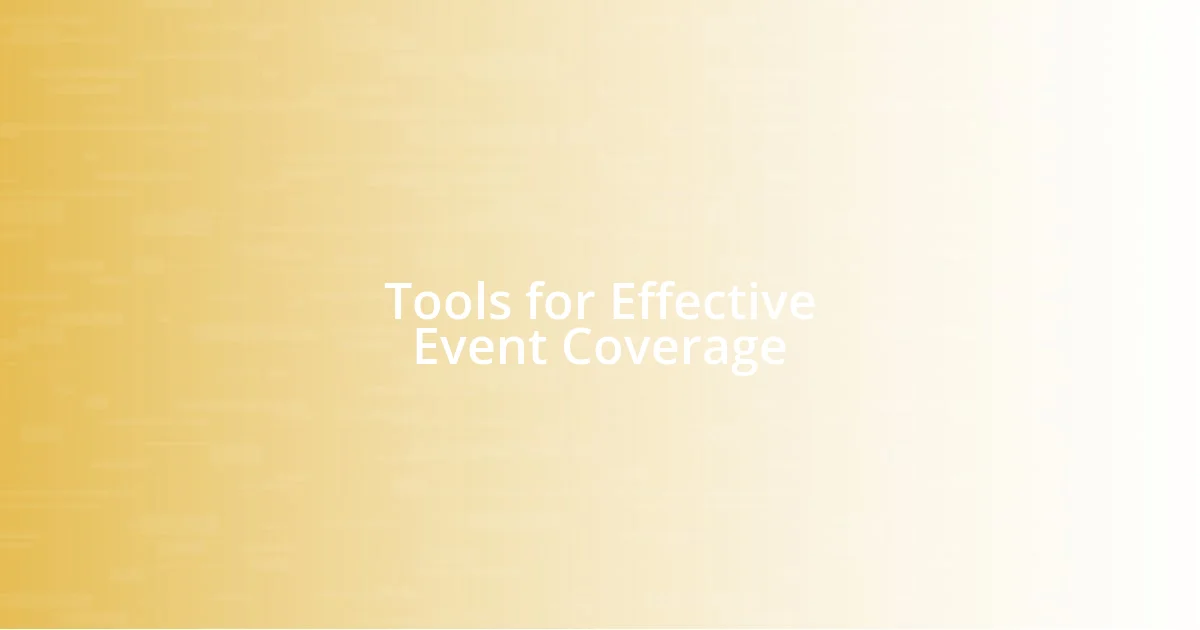
Tools for Effective Event Coverage
When it comes to covering corporate events effectively, the right tools can make a significant difference. In my experience, I’ve relied heavily on a combination of audio-visual equipment, social media platforms, and content management systems. These tools not only help in capturing moments brilliantly but also ensure that the content is engaging and readily available for later use.
- High-Quality Cameras: A good camera is essential to capture crisp images and videos that reflect the energy of the event. I always prefer DSLRs for their versatility.
- Microphones: Investing in quality microphones can elevate the audio quality of interviews and keynotes, making the content much more enjoyable to consume.
- Live Streaming Tools: Platforms like Zoom or Facebook Live enable real-time connection with a broader audience, which I find incredibly useful for increasing engagement beyond the venue.
- Social Media Scheduling Tools: Apps like Hootsuite help in planning and posting updates during the event, keeping your online audience in the loop.
- Photo Editing Software: Apps like Lightroom make it easier to enhance images, ensuring the final product looks polished and professional.
An instance that stands out to me involved using drone footage at an outdoor corporate retreat. The aerial shots provided a unique perspective that really showcased the venue’s beauty. It transformed what could have been an ordinary event recap into a visually stunning narrative. I remember the exhilaration when we premiered the final video—it felt like I was sharing a piece of art that captured not just faces but emotions, the laughter, the bond amongst attendees. That moment solidified in me just how powerful the right tools can be for storytelling.
It’s all about having the right resources at your disposal. When I’m well-equipped, I find that creativity flourishes, and I can highlight the moments that resonate most with the audience’s experience. The technology becomes an extension of the narrative I’m trying to create, leading to meaningful engagement with the brand.
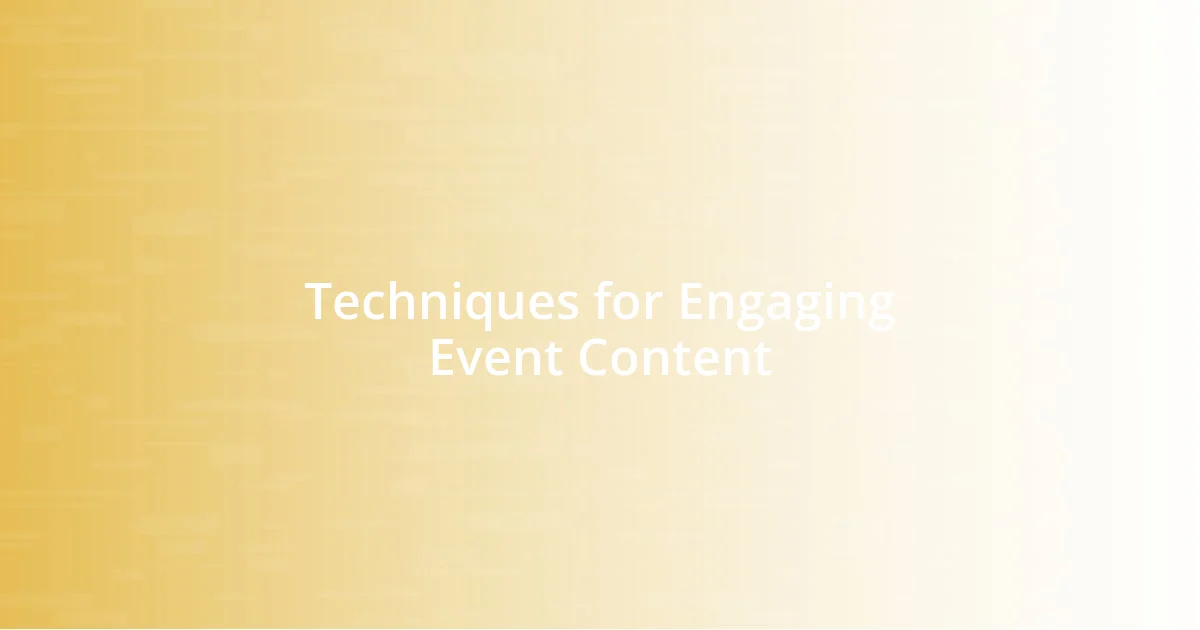
Techniques for Engaging Event Content
Creating engaging event content is all about capturing the essence of the experience. During one of the corporate seminars I covered, we decided to introduce interactive Q&A segments using real-time polling. This not only kept attendees engaged but also created an electric atmosphere where everyone felt their voices mattered. Have you ever noticed how energized a crowd can become when given a chance to participate actively? That’s the magic of interactivity.
Visual storytelling is another technique I turn to often. I once recorded interviews with attendees immediately after a session, capturing their fresh reactions. The genuine enthusiasm they expressed added a layer of authenticity that polished the final edit. By allowing the audience’s voice to shine through, the content felt more relatable and engaging. It’s fascinating how genuine experiences can evoke emotions that resonate long after the event is over.
Lastly, I find that leveraging behind-the-scenes content can create a sense of intimacy between the brand and the audience. I remember sneaking in candid shots while the team set up—those moments showcased the hard work that went into making everything happen. Sharing these glimpses humanizes the event, making it feel less corporate and more personal. Isn’t it great to know the effort and passion behind a beautifully executed event?
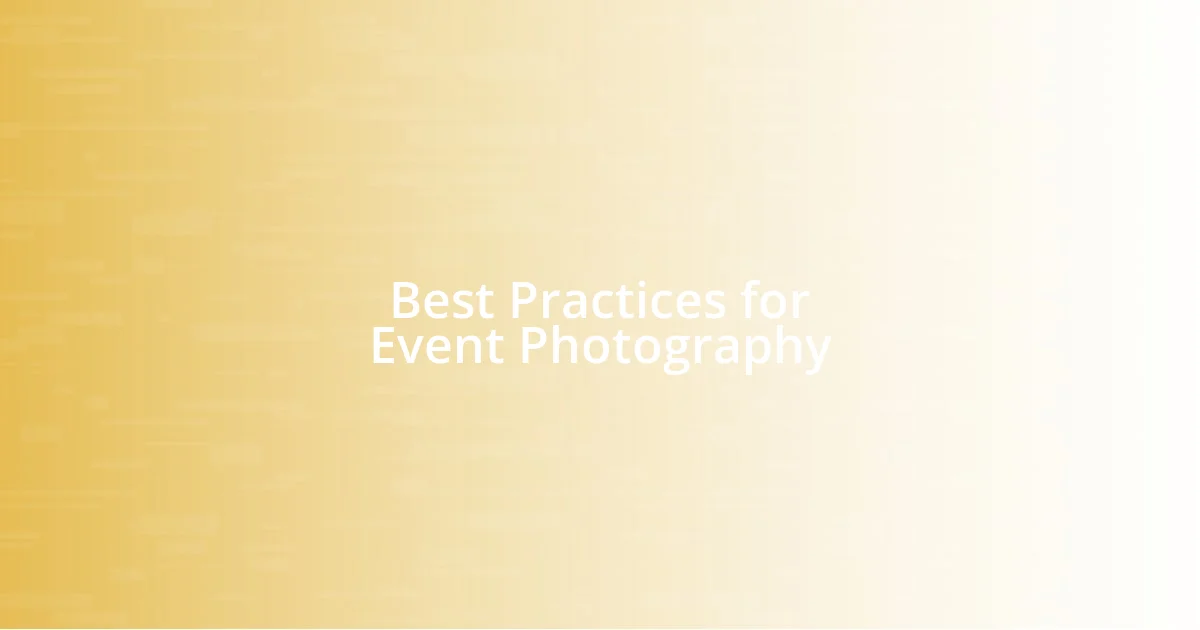
Best Practices for Event Photography
When it comes to event photography, preparation is key. I’ve found that visiting the venue beforehand allows me to scout the best angles and lighting conditions. This is crucial for capturing the atmosphere effectively; sometimes, the perfect shot is just a few steps away from where you initially stand. Have you ever rushed into an event, only to find yourself struggling with poor lighting? I know I have, and it taught me to always have a game plan in place.
Another best practice I’ve adopted is to blend into the environment. The more unobtrusive I am, the more authentic moments I can capture. I recall one corporate gala where I mingled with guests rather than sticking out as a photographer. This approach led to some incredible candid shots of laughter and connection that truly conveyed the spirit of the night. It felt rewarding to document those genuine interactions—there’s something beautiful about capturing real emotion when people are at ease.
Finally, keep a keen eye on the details. In one event, I focused on the small elements like name tags, centerpieces, and even the food layout. Those subtle touches enhance the storytelling aspect of event coverage. People often appreciate seeing the little things that might otherwise go unnoticed. It adds depth to the narrative and helps the audience relive the experience more fully. Don’t you love when a photo sparks a memory you thought you had forgotten? That’s the power of detail in event photography.
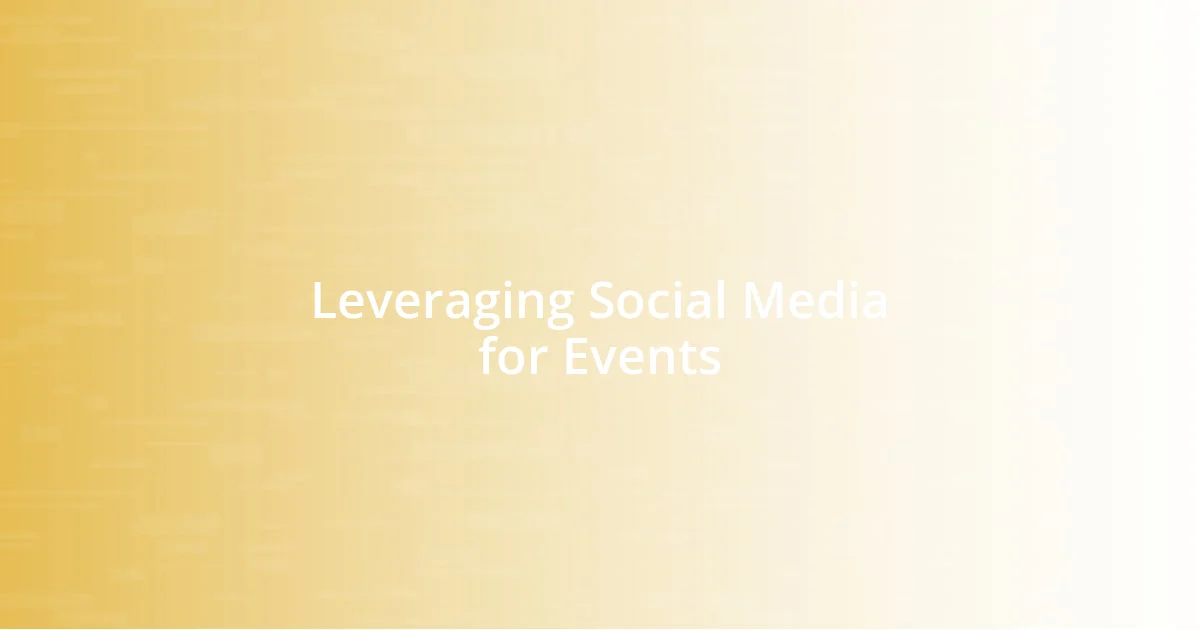
Leveraging Social Media for Events
When I think about leveraging social media for events, I remember a particular product launch I covered. The event’s official hashtag was a game changer, driving conversations and excitement online. Attendees were encouraged to share their experiences on platforms like Twitter and Instagram, creating a ripple effect that extended far beyond the venue. Have you ever seen an event trend online? It can electrify the atmosphere and get people talking!
In my experience, live streaming segments of the event on Facebook and Instagram can also foster real-time engagement. During a conference I worked on, we streamed a keynote speech and saw a surge of interaction, with people commenting and asking questions from all around the globe. This connected the in-person audience with remote viewers, creating a vibrant community eager to participate. Isn’t it fascinating how technology can bridge distances?
Additionally, post-event content can keep the momentum going long after the last guest has left. After one successful gala, I shared a highlight reel that included not just the main speakers but also the joyful moments between guests. The excitement I felt as I watched the engagement rates soar was unforgettable. It reminded me that even after the event ends, social media offers a platform for continued storytelling and connection. How have you seen social media play a role in enhancing event experiences?
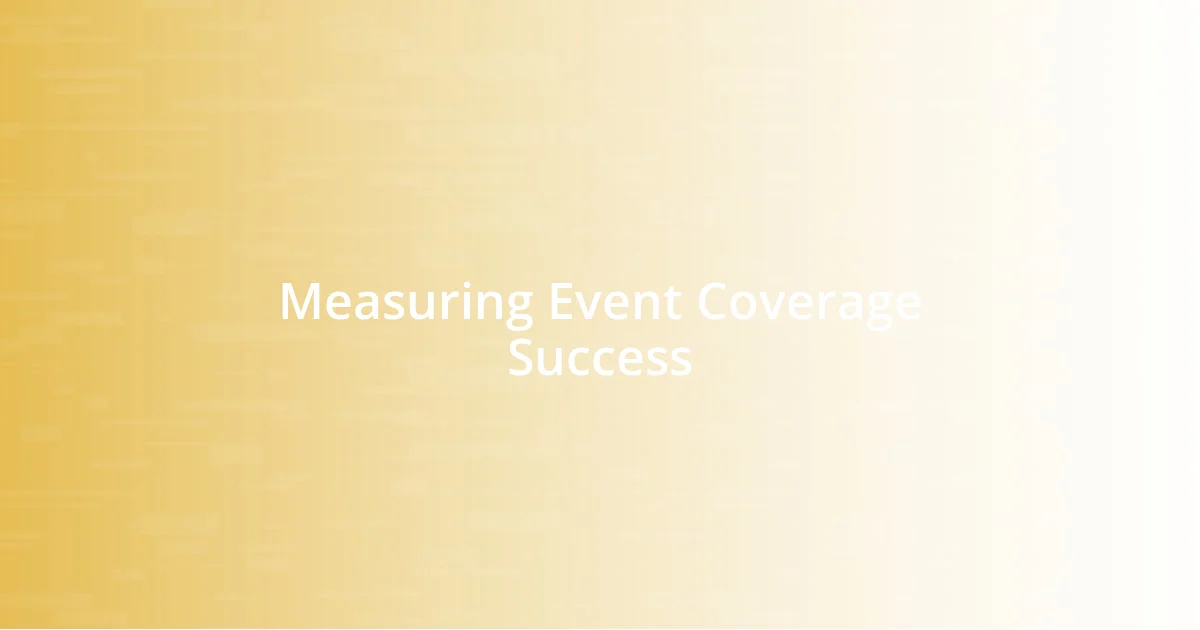
Measuring Event Coverage Success
Measuring the success of event coverage often hinges on several key indicators. For me, metrics like audience engagement, social media shares, and post-event feedback are invaluable. I remember at a recent tech conference where we used real-time polls and surveys to gauge reactions during sessions; the immediate responses shaped our coverage strategy on the fly. Have you ever felt the pulse of an event change based on audience feedback? It’s exhilarating to adapt in the moment.
Another vital aspect is analyzing the visual content generated. After wrapping up an annual gala, I meticulously reviewed the photos and videos to see which moments resonated most with the audience. Surprisingly, it was the behind-the-scenes shots that sparked the most conversations online, illustrating the power of storytelling through visuals. Have you noticed how sometimes the unscripted moments tell the most compelling stories? Those insights are crucial in guiding future coverage to create an even more engaging experience.
Lastly, I find that follow-up interviews can provide deep insights into the event’s impact. After a corporate workshop, I reached out to participants, asking how the experience influenced their work. The responses were heartwarming and often emphasized the value of networking and inspiration gained. This feedback not only measures success but also fosters relationships beyond the event, proving that the impact doesn’t just end when the lights go out. Have you ever reflected on how an event influenced someone’s journey? Those stories are what truly make event coverage meaningful.



